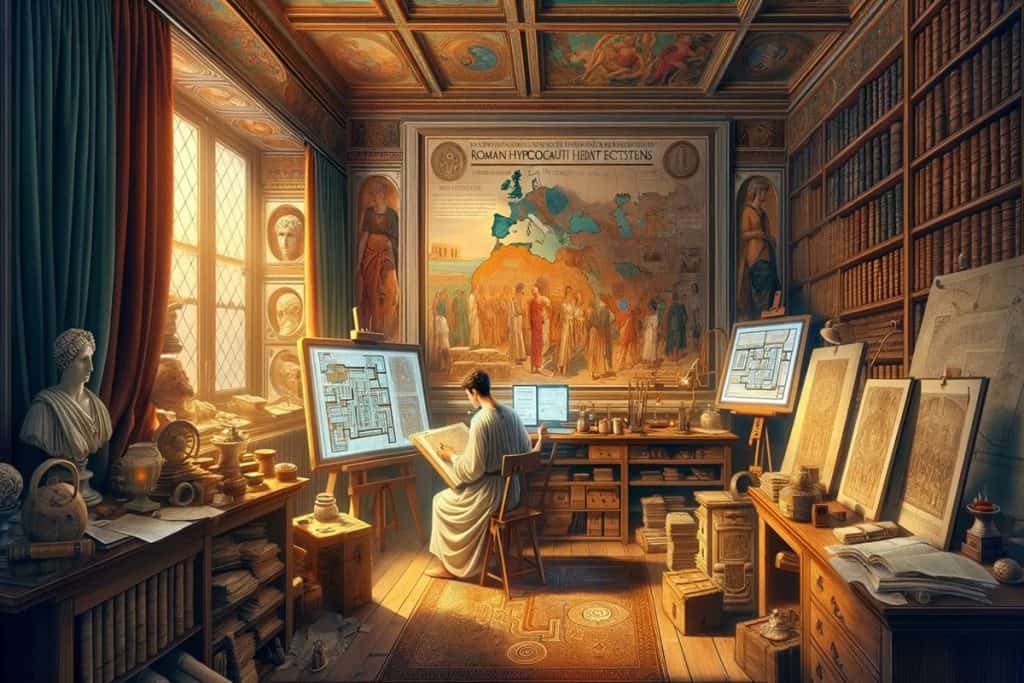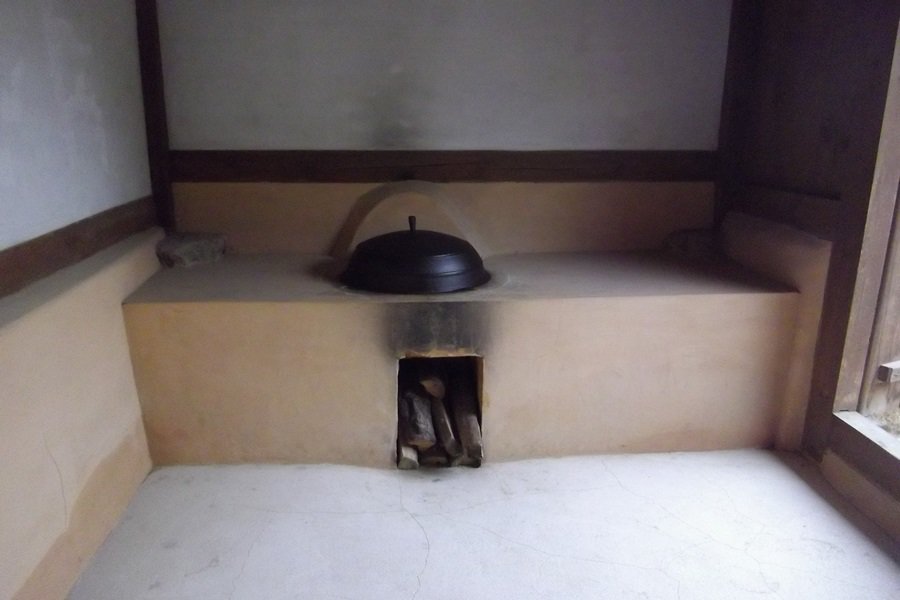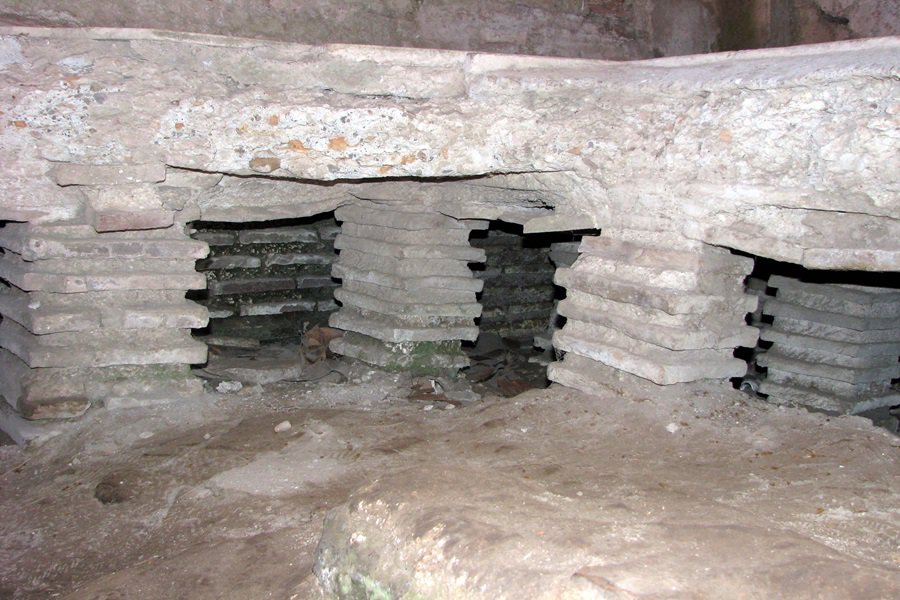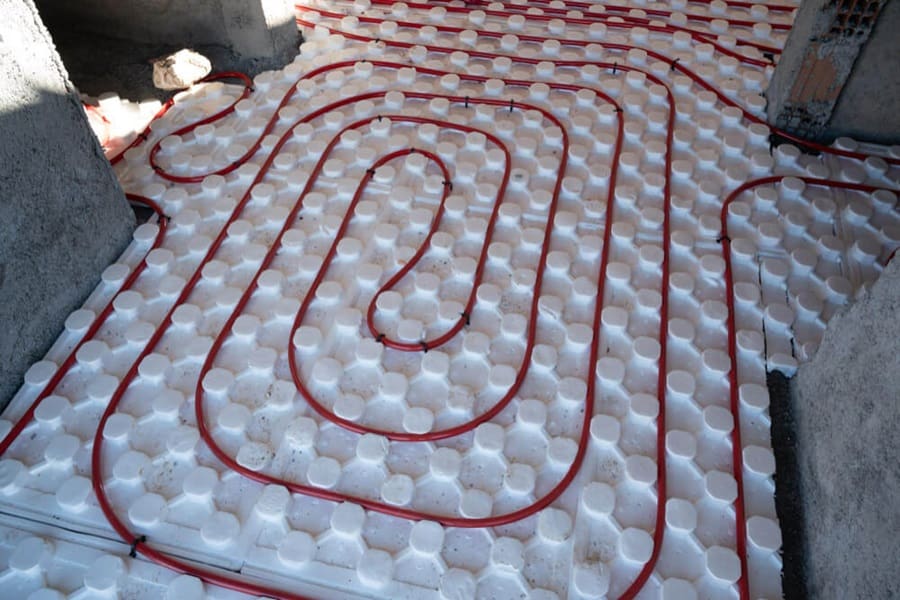
Ever wondered about the origins of the warmth beneath our feet? Find out now.
Underfloor heating is a worldwide phenomenon in the midst of revolutionary heating methods in everyday homes. However, it is not a new thing! In this article, you will learn about the original roots that underfloor heating stemmed from, and how the history of underfloor heating has been integrated into every culture throughout the world, from the introduction of roman underfloor heating, to Continental UFH, to the systems that we offer today for modern homes.
When Did Underfloor Heating Begin: The Earliest Evidence

Long before the modern conveniences of central heating, the concept of warming living spaces from the ground up was already in practice. The origins of underfloor heating trace back to Korea around 5,000 BC, with the advent of the ondol, or “warm stone”.
This ancient heating method involved the use of baked floors over a fire hearth, a dual-purpose innovation that served both as a heating system and an early form of oven. By 900 BC, the Koreans had refined this system, using double hearths for separate functions, showcasing an early understanding of thermal management.
Greek and Roman Underfloor Heating
The Greeks and Romans, around 500 BC, adopted and adapted the concept of underfloor heating, implementing hypocausts—a system where floors were raised on pillars, allowing hot air to circulate beneath. This early foray into underfloor heating by the Romans and Greeks marked a significant milestone in the architectural and engineering efforts to control indoor climates.
However, it was the Koreans who continued to pioneer advancements in underfloor heating. By 200BC, the ondol had evolved into a more sophisticated system with two sections: the gudeul, the central heat-releasing part, and the budumak, an outer perimeter used for cooking. This innovation highlights the continuous refinement and adaptation of heating systems to meet the evolving needs of societies.
A Split In Continental Underfloor Heating
By 500 AD, a distinct divide had emerged in the preferred heating methods across continents. While Asians continued to innovate and use the ondol, Europeans shifted towards open fires for warmth. This period also saw the Middle East focus on cooling rather than heating, using snow-packed walls to insulate against the heat. Despite these regional differences, the use of hypocausts in Mediterranean countries and the further development of the ondol in Asia demonstrated a universal quest for thermal comfort.
In Europe, palaces and the homes of the affluent often featured advanced forms of the gudeul, while the common hypocaust system was widely used in both private and public spaces. The ondol, meanwhile, reached its zenith in Korea by 1000 AD, with external fire furnaces heating entire homes through intricately floored systems. This period underscores the global diversity in heating solutions, reflecting varying environmental, social, and technological landscapes.
What is the Hypocaust?

A phrase that you would have seen numerous times in this article is a hypocaust. This is an ancient Roman underfloor heating innovation, representing a significant leap in underfloor heating technology. Designed for heat distribution, this system utilised heated air from fires to warm spaces above a system of hollow chambers.
The furnace, situated at one end of the room, generated hot air that flowed through these chambers, effectively heating the room above. This system, while innovative, was a luxury afforded only by the wealthy, requiring constant maintenance by servants to stoke the fires. Without this mechanism often situated with Roman underfloor heating, we probably would not have the inventions we have today…
Revolutionary Underfloor Heating in the 19th Century
The 19th century marked a period of intense study and innovation in heating technologies in Europe, laying the groundwork for the central heating systems we recognise today. Scientists and engineers delved into the principles of surface reflectivity, thermal conductivity, and surface emissivity.
It was during this era that Hans von Pechmann, a German scientist, discovered a waxy residue at the bottom of a test tube after an experiment, which his colleagues named polymethylene. Initially overlooked, this substance would later revolutionise underfloor heating systems with the advent of polyethylene-based pipes.
These pipes, crucial for the modern wet underfloor heating systems, allowed for efficient and reliable water circulation beneath floors, providing warmth without the visibility of traditional heating elements.
Twentieth Century Innovations
The 20th century witnessed significant advancements in underfloor heating, merging ancient principles with contemporary technologies. In 1904, the concept of the hypocaust was revived in an underfloor heating system for Liverpool Cathedral, demonstrating the enduring relevance of ancient heating methods.
Shortly after, Frank Lloyd Wright, inspired by his visit to Japan, began integrating early forms of radiant heating into his architectural designs, further popularising underfloor heating in modern construction.
In England, 1907, Professor Arthur H. Barker’s invention of warming panels using small pipes led to a patent that would become a precursor to contemporary underfloor heating systems. By this time, Europe and America had significantly advanced beyond the traditional ondol systems of Asia, marking a global shift towards more sophisticated heating solutions.
1930s and 40s
The 1930s and 1940s brought further innovation, with Oscar Faber and William Levitt implementing water pipes for heating and cooling homes, proving the feasibility and efficiency of underfloor heating on a large scale. The Korean War in the 1950s, however, highlighted a critical turning point for Korea’s ondol system, as the depletion of wood supplies forced a transition to coal, bringing about new challenges and dangers.
1950s and 60s
Research into durable materials for heating pipes also peaked during the 1950s, with the establishment of the first polyethylene plant in Canada marking a significant milestone. The invention of cross-linking polyethylene by Thomas Engel in the 1960s provided a stable and efficient material for underfloor heating pipes, paving the way for modern systems.
Modern Underfloor Heating Systems

Today’s underfloor heating systems, whether powered by boilers or electricity, owe much to the cumulative advancements of the past. Modern systems use a network of pipes or electric mats laid beneath the floor to distribute heat evenly across a room, eliminating cold spots and reducing the need for traditional radiators. These systems can be installed under various types of flooring, making underfloor heating a versatile option for new builds and renovations alike.
What Lessons Can History Teach Us About Underfloor Heating Systems?
Reflecting on the history of underfloor heating reveals a continuous effort to improve living conditions through innovative heating solutions. From the ondol to the hypocaust, and now to modern radiant heating, each iteration has contributed to more efficient, comfortable, and sustainable ways to heat our spaces. Modern underfloor heating systems offer several advantages over conventional heating methods, including even heat distribution, energy efficiency, and the luxury of warm floors, making them a desirable choice for many homeowners.
But why is underfloor heating so popular? Understanding the correlation between heat and asthma is useful for those who suffer from the condition…
What’s Next For Underfloor Heating?
The journey of underfloor heating from ancient times to the present day illustrates humanity’s relentless pursuit of comfort and innovation. As we continue to refine and adapt these systems, the principles laid down by our ancestors remain at the heart of modern underfloor heating. Luxurious, efficient, and versatile, underfloor heating systems stand as a testament to the ingenuity of past and present, offering a warming embrace in our homes and lives.
But where does the future of underfloor heating lie? No one knows, but the fact that we can control underfloor heating from your phone demonstrates that this heating system is never afraid to renovate and reinvent itself with changing times…
Delve further into history with this heating timeline.
FAQs
What year did underfloor heating start?
Underfloor heating has ancient origins, with forms of it being used as far back as 5000 BC in Korea. The Romans also used a form of underfloor heating called hypocausts around 25 BC.
What is the downside of underfloor heating?
The downsides of underfloor heating include the initial high installation cost, potential for a lengthy installation process, especially in retrofit projects, and the challenge of repairing leaks or issues since access to the system requires removing the floor surface.
Did the Romans invent underfloor heating?
The Romans did not invent underfloor heating but significantly advanced the technology with their hypocaust system, which heated rooms from a hollow space under the floor, around the first century BC.
What is the life expectancy of underfloor heating?
The life expectancy of underfloor heating systems can vary, with electric systems typically lasting around 15-30 years and water-based (hydronic) systems potentially lasting up to 50 years or more with proper maintenance.
Sources
The Editors of Encyclopaedia. (2016) Hypocaust. Encyclopedia Britannica. [online] Available at: https://www.britannica.com/technology/hypocaust [accessed 20/02/24]
Asia Society. (n.d.) Ondol: Korean Traditional Heating System. [online] Available at: https://asiasociety.org/korea/ondol-korean-traditional-heating-system [accessed 20/02/24]
QS Supplies (2020). History of Heating Timeline. [online] Available at: https://www.qssupplies.co.uk/history-of-heating-timeline.html [accessed 20/02/24]
